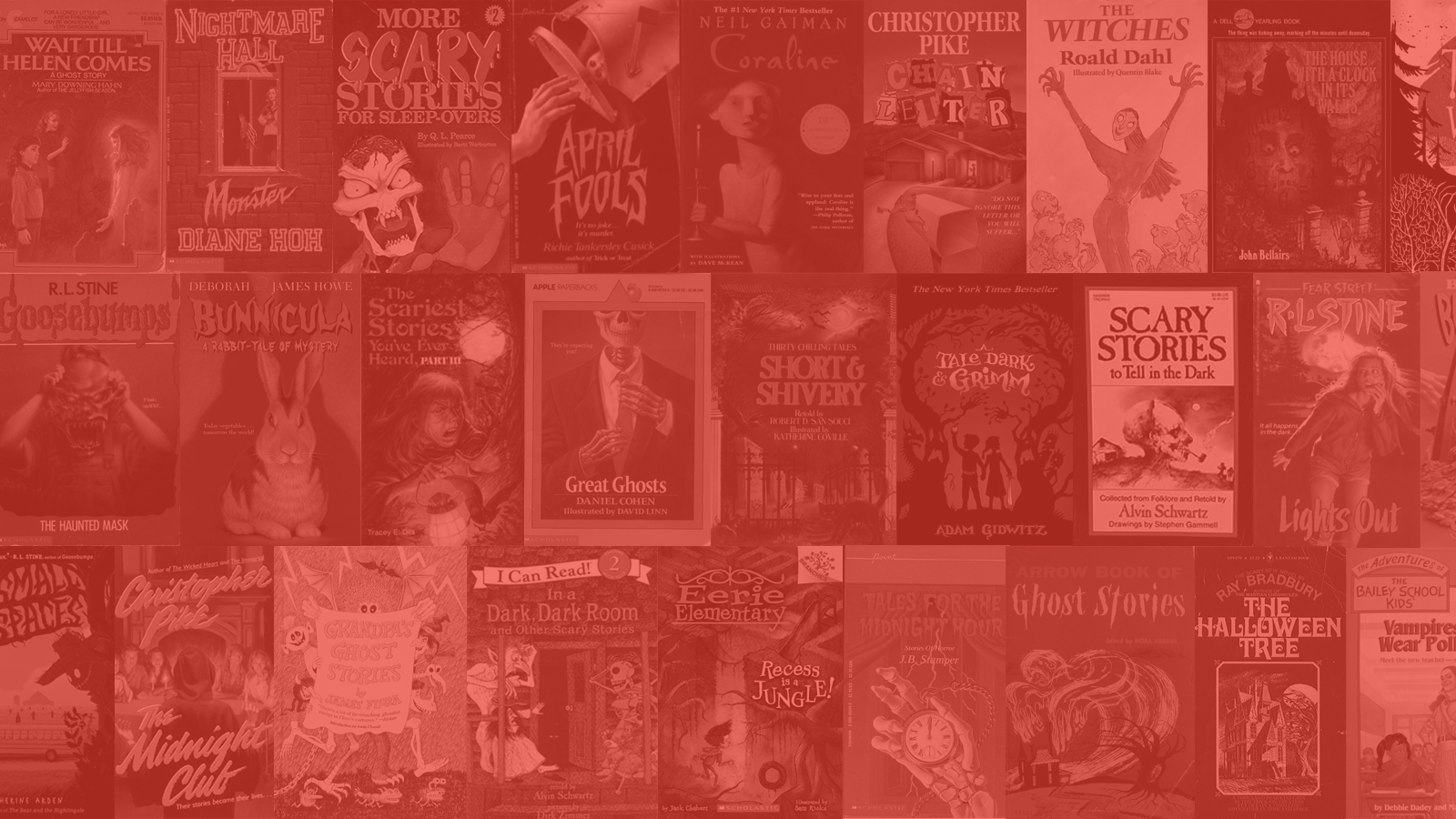90s Kids Books That Go Bump in the Night
In some ways the momentum for kids horror that was building in the 1980s came to its natural climax in the 1990s: near domination of the children’s book world… and then (arguably) over-saturation.
Afterall it was in the 1990s when R.L. Stine climbed his way to become one of the best-selling authors of all time. Period. Yes, that’s him in the Top 20, the only children’s book authors higher being J.K. Rowling, Dr. Seuss, and Enid Blyton. He even tops Stephen King himself, a fellow author he is often compared to.
The 1990s can be seen as a continuation of many of the publication trends that started in the 1970s and 80s. The one thing that in some ways faded away was the huge interest in “true” horror, ala folklore and urban legends. Yes, Scary Stories to Tell in the Dark and Daniel Cohen and other such books and authors were still quite popular in the 1990s. But those provided all that was needed in the case of scary tales taken from folklore. In some ways the trend began to die out, replaced with the behemoth that was Goosebumps, Point Horror, and the huge success of many scary books for teens (YA) and horror authors of that time.
R.L. Stine Books
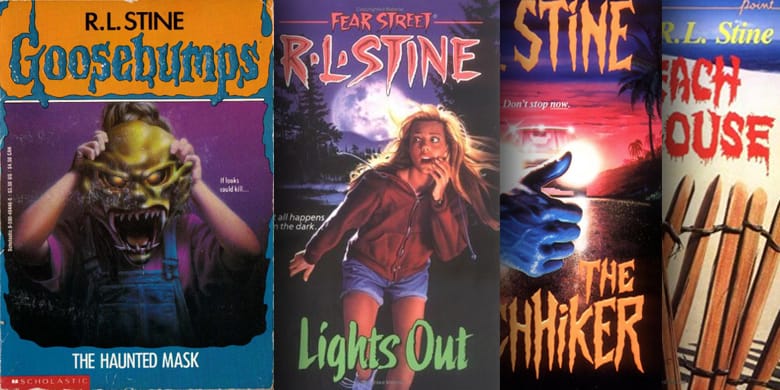
Author R.L. Stine hopped around the children’s book publishing world for years throughout the 1970s, known primarily for humor and joke books. A pen name used for many of these was Jovial Bob Stine, and he was also known for creating, writing, and editing a teen humor magazine for Scholastic named Bananas.
It was in 1986 he penned his first scary book for kids, Blind Date. He followed that up with several more, and in 1989 he began his teen series Fear Street. It was similar to his previous scary YA novels, in that the antogonists were often human stalkers, and he didn’t shy too much away from violence and death because the audience of teenagers were prepared for such things.
A few years later in 1992 was when Goosebumps was launched, which came to catapult his success into a household name. Goosebumps was his attempt to cater to younger children, essentially what is called middle grade fiction. These books typically had monsters, inanimate objects, or supernatural beings as the antagonists, not humans, and the humor and whimsy of the tales made them perfect for that age group. They were further away from reality than their YA counterparts, which made them notably different.
R.L. Stine has in many ways become the face of the kids horror genre over the years. With his likable demeanor and openness to his process, we seem lucky to have such a representative. I for one interviewed him for my documentary and will always appreciate his caring and thoughtful approach to scary books for kids.
Further Reading:
Buy:
Point Horror Books
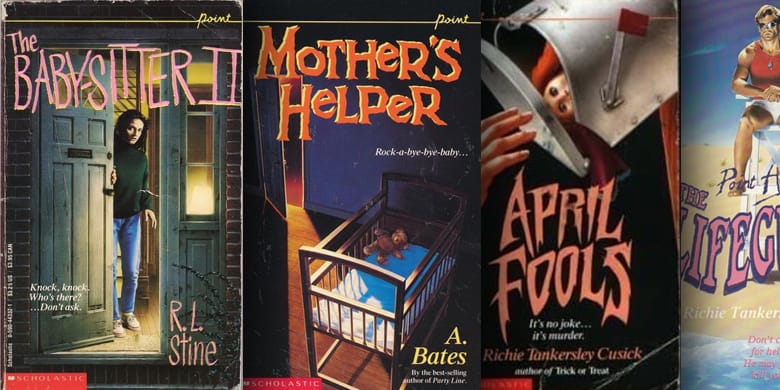
In many ways the beginning of the R.L. Stine juggernaut (and the beginning of numerous other authors in the scary kids genre) was the Point Horror series.
The Point Horror series was launched in 1991, and with that they re-released several books that were previously published under this new brand. It included 1986’s Blind Date by R.L. Stine and Weekend by Christopher Pike. They subsequently published over 100 scary YA novels between the years 1991-2005, some of which were released under three offshoots of the main brand: Point Horror Unleashed, Nightmare Hall and Mutant Point Horror. Though a majority of the books were released in the hey day of the mid-1990s.
Further Reading:
Point Horror: 25 years on, let us praise a forgotten ’90s craze
Frightening Females: The Women Writers Who Made Point Horror Iconic
Buy:
Christopher Pike Books
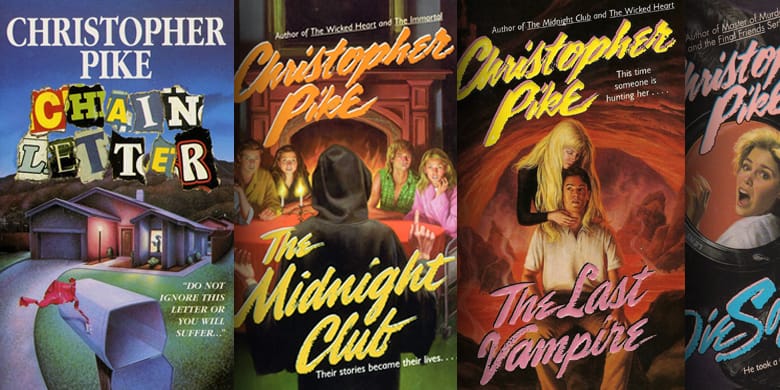
Similar to R.L. Stine, Christopher Pike began in the horror genre with a string of books beginning in the late 1980s. But similarly, it was the early 90s and that decade that he is most synonymous with catching hold of a fervent fanbase.
Christopher Pike is a pen name for Kevin Christopher McFadden. He is known for over 30 individual scary YA novels and several series, including The Last Vampire series (later titled Thirst), Spooksville, and Final Friends. While many of his books mimic similar setups found in other tiles of the genre, such as teens being chased by a stalking killer or dabbling in witchcraft, Christopher Pike skewed significantly into science fiction and spiritual themes that have made him unique in the YA horror space.
Further Reading:
Everything You’ve Always Wanted to Ask Christopher Pike
Pike for All: 10 Christopher Pike Books for Different Types of Horror Fans
Buy:
Bruce Coville Books
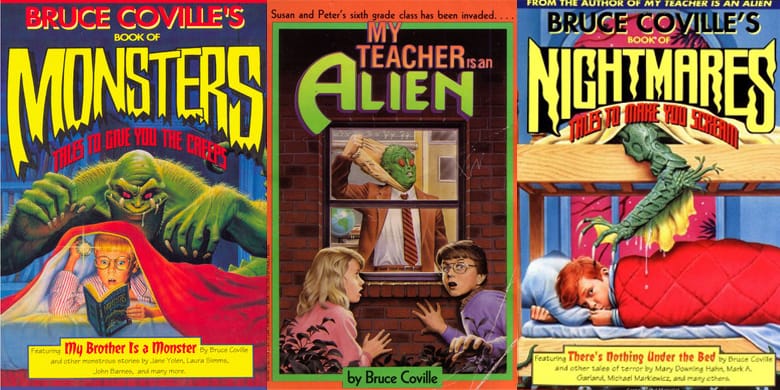
Bruce Coville jumped onto the scene in 1989 with the popular book My Teacher Is an Alien, which blends scifi and horror tropes with a middle grader’s sensibility. He went on to write over 70 books, usually under specific series such as I Was a Sixth Grade Alien series, Bruce Coville’s Book of series, and Bruce Coville’s Chamber of Horrors.
Bruce Coville got his start in scary kids literature in one of the same ways other authors did in the 1980s, by authoring books in an establish series. In this case it was Dark Forces. But with the success of My Teacher Is an Alien and other books he produced in the early 1990s, he slowly become an important pillar in providing scary books for kids for decades, as well as many children’s titles in the science fiction and fantasy genres.
Buy:
Diane Hoh Books
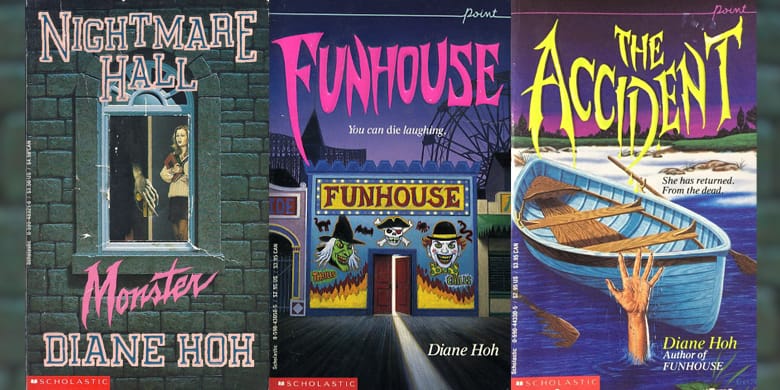
Diane Hoh became known for her Point Horror books, but she also transcended it and became her own brand in a lot of ways. After authoring a number of books for the series, she became synonymous with one of the offshoots of Point Horror, Nightmare Hall. She was author of 29 titles under the Nightmare Hall series, as well as 6 under the lesser-known Med Center series.
She later found success in the latter part of the 1990s by authoring two books about the Titanic which grew wide acclaim.
Further Reading:
Buy:
Mary Downing Hawn Books
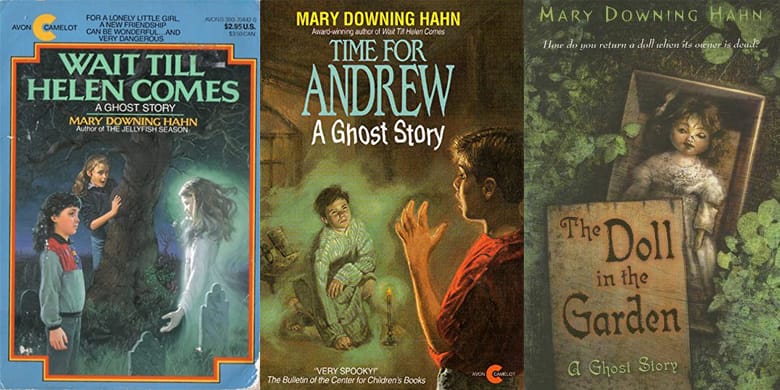
This is filed under the 1990s, but Mary Downing Hawn became well-known starting in the 1980s with her Wait Til Helen Comes, a staple of the supernatural genre in children’s literature. She has been writing scary books for kids and teens ever since, with many awards under her belt.
Buy:
Short and Shivery
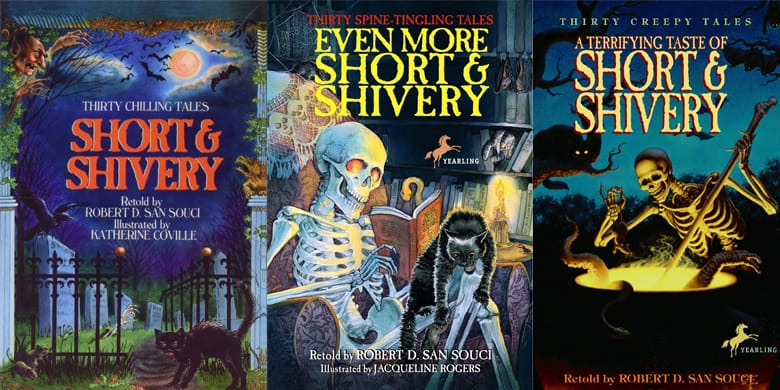
These collection of short scary stories came in four volumes that were originally published between 1987-1998 and were written by author Robert D. San Souci. They included Short & Shivery: Thirty Chilling Tales (1987), More Short & Shivery: Thirty Terrifying Tales (1994), Even More Short & Shivery: Thirty Spine-Tingling Tales (1997), and A Terrifying Taste of Short & Shivery: Thirty Creepy Tales (1998).
It is easy to see parallels between this series, the Scary Stories to Tell in the Dark book series, and going back further to the books of Maria Leach in the 1960s-70s. Like the others, Short and Shivery collected short scary stories from around the world, adapted and packaged them into fun reading for children while at the same time conveying a certain amount of context to the folk tales.
Stories found in Short and Shivery that could also be found in the other collections from Alvin Schwartz (and Maria Leach) in some form or another include The Golden Arm, the Wendigo legend, and The New Mother.
Robert D. San Souci passed away in 2014, but not without leaving a formidable collection of books for young children to enjoy for years to come.
Further Reading:
Mourning Children’s Book Author Robert D. San Souci
Buy:
Scary Stories for Sleep-overs
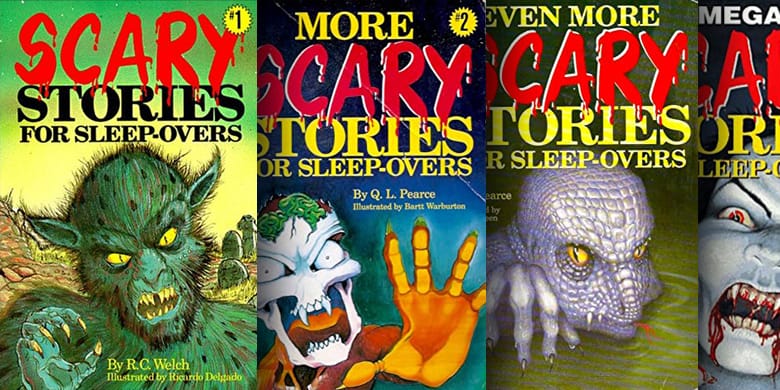
Every year of the decade starting in 1991 saw a new release of the anthology Scary Stories for Sleep-overs. Aimed directly at the same demographic that made Scary Stories to Tell in the Dark and Short and Shivery very popular, these books were original tales that mixed illustrations and stories of paranormal or otherwise creepy circumstances. With stories like The Slime Mutants of Clear Lake and Mummy’s Little Helper, many of them took after R.L. Stine’s more whimsical tone while providing short stories that were easy to read for those on the younger side who wanted such tales.
Although they had different authors, 5 of the 10 original books were authored by Q.L. Pearce, who frequently shows up on podcasts and is a welcoming voice in the world of scary stories for kids.
Further Reading:
Buy:
Shivers Books
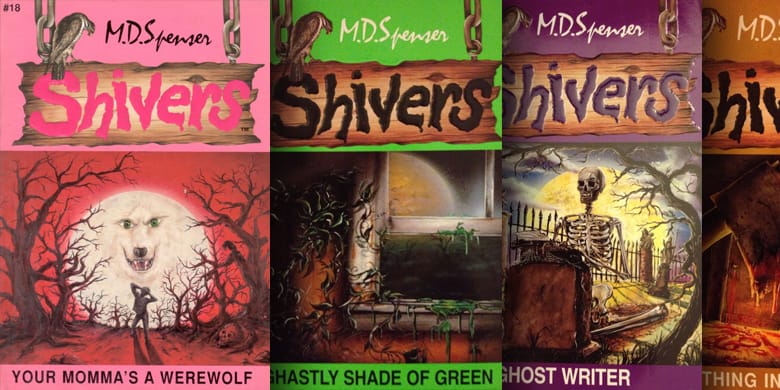
Authored by M.D. Spenser, the Shivers books mimic Goosebumps in many ways and included 36 books published between 1996-1998. Yes, that is a lot of books in just two years.
Hearing M.D Spenser’s description of how he came to write the series explains a lot about the time and huge interest in publishers wanting to churn out Goosebumps-like books for kids.
Out of the blue, a publisher called me and asked if I could write a series of scary chapter books for kids. I was astonished, and my first reaction was, “No, I don’t think so.” But then I sat around my house for an hour or two and thought, why not give it a try? So I called back and asked, “Um, can I change my mind about writing that series?” And the answer came back, “Yes. Get me a list of the first six titles right away.”
– Gittle Publishing, 2013
Shivers was later released as e-books.
Further Reading:
“Shhhh Bi—, Im Trying To Read Shivers”: A List Of All 36 Books
Buy:
Bone Chillers Books
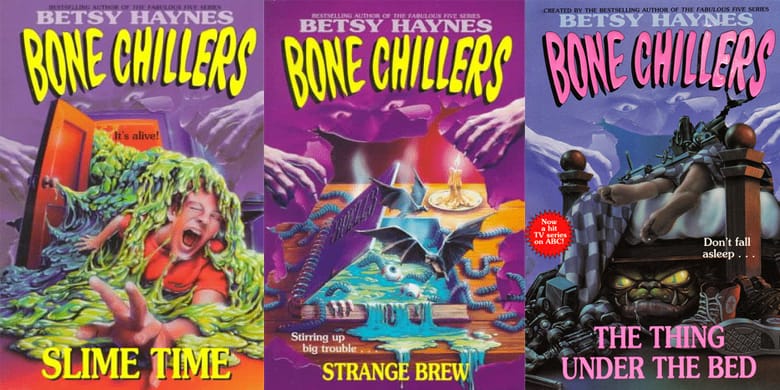
Bone Chillers was a series of scary books for kids centered around four friends at Edgar Allan Poe High School. Betsy Haynes was credited as author of all 23 books that were released in 1994-98, though a few were ghost-written.
If it isn’t obvious, there seemed to be something around the years 1994-1997 that had publishers scrambling to publish scary chapter books. If it isn’t obvious, here is a 1996 article crediting Goosebumps with selling 5 million copies per month and being so successful, it was scary. The huge surge of popularity of Goosebumps between 1992-1995 was making publishers take notice. Thus came Bone Chillers, Shivers, and many others.
The Bone Chillers books had some unique aspects, such as being adapted into a short-lived TV show on ABC in 1996 that included author Betsy Haynes appearing for educational segments.
Bailey School Kids Books
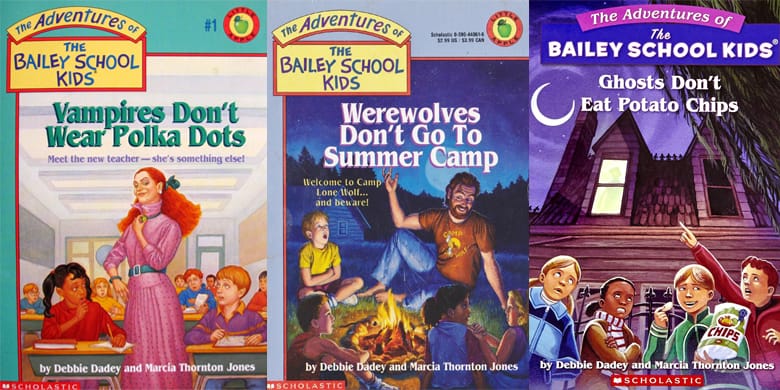
The first Bailey School Kids book was Vampires Don’t Wear Polka Dots, released in January 1991. Which means they happen to pre-date Goosebumps and the huge popularity it spawned.
But the Bailey School Kids books were quite a bit different than Goosebumps in many ways. Co-authored by Marcia T. Jones and Debbie Dadey, a teacher and a librarian, they focused on a particular class and the unusual events surrounding the children and adults in that classroom. In that and the way they were marketed, it seems clear that Wayside School is Falling Down and The Magic School Bus books are the most similar children’s book comparisons, since Goosebumps was not a phenomenon quite yet. They are also similar in that while these books did cater to young children who had an interest in spooky things, they did not get much scarier than what could be found in a typical day in Wayside School, for instance.
Over 80 books in the series, the titles always had the intriguing premise of whether an adult or spooky thing around the children was in fact an example of a well-known scary monster or thing… is my teacher a vampire? is my camp counselor a werewolf? It also mimics other titles on this list that raise similar questions, such as My Teacher is an Alien as well as the premise of many Goosebumps, Shivers, and Bone Chillers books. A common entry point when it comes to scary books for kids are the people and things around them that might just be something scary under the surface.
Last Updated on February 2, 2022.

